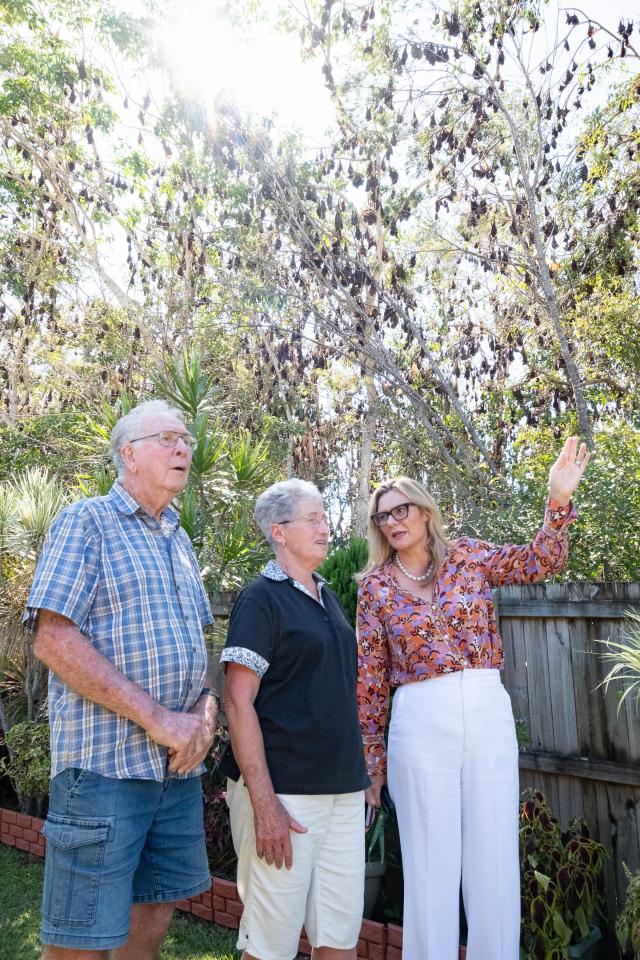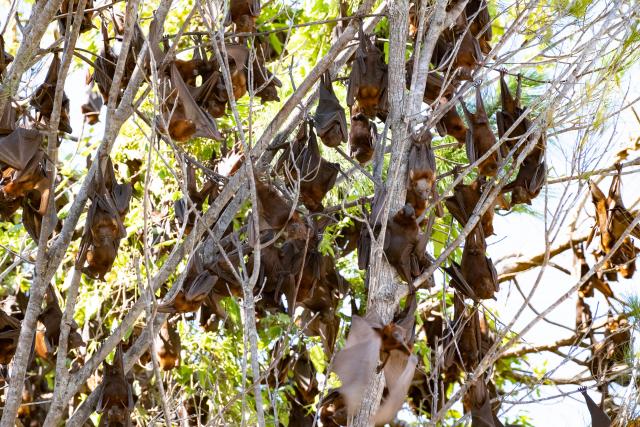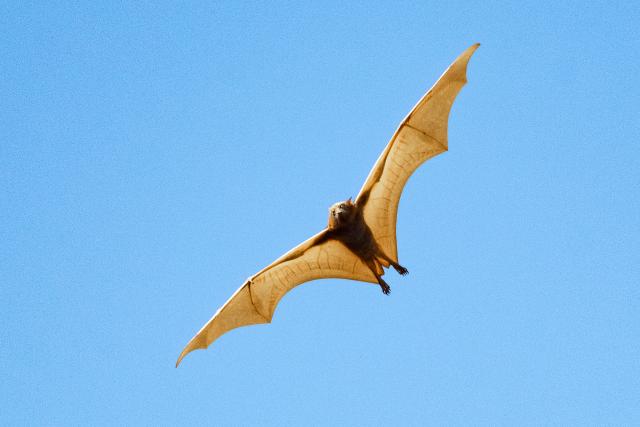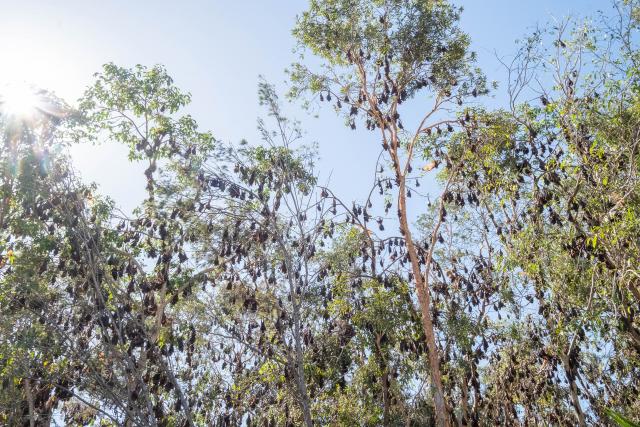
Margie Maccoll
A group of elderly residents at Hibiscus Retirement Village have been stressed, sleep deprived and suffering headaches and respiratory issues since a large colony of bats decided to make their home in a narrow stretch of trees known as the Waratah Reserve at their back doors.
Pam and Bill Birch moved from the country to their retirement village unit about eight years ago, attracted to the site, in part, because it backed on to a strip of bushland.
On Monday they said they would happily sell up and move because the bat colony was making their lives unbearable, but they are certain no-one would buy their unit now. A neighbour who recently moved to a nursing home has been unable to sell, they said.
“The smell is horrendous,” Pam said.
“We have to keep the unit locked up.”
The Birch’s neighbour, 92-year-old Daphne, who has been a village resident for the past 23 years, said the bats had forced her to live locked inside her unit, which without air-conditioning, only ceiling fans, has been hot, uncomfortable and isolating.
“It changes your lifestyle,” she said. “It’s the noise and I can’t hang out the washing. I can’t go into the garden – I love my garden.”
Each evening residents watch as the flying foxes take to the skies in unison to forage for food, leaving behind the babies they have nurtured since arriving at the site.
“It’s quite frightening,” Pam said of the evening exodus.
“They’d be fascinating if it wasn’t so distressing.”
Pam, who is on the village committee, said residents had written to Noosa Council for assistance.
She said a council officer visited, counted 650 flying foxes, but said there was nothing council could do about the protected species.
Pam said the flying foxes arrived about 12 months ago at the back of their property with the population increasing dramatically since October.
Mayor Clare Stewart visited the residents on Monday to view the situation.
Residents have been notified by council of a meeting arranged on 8 March at the village to discuss the situation, calling for residents to forward any questions prior to the meeting.
Council’s Acting Environment manager Rebecca Britton said Grey-headed and Black Flying-foxes have been roosting in the Waratah Reserve for at least the past decade, with numbers remaining relatively stable at less than 1000 or so bats.
“Recently the roost has grown significantly due to a large seasonal influx of Little Red Flying-foxes,” she said.
“Council appreciates the impact this is having on nearby residents.”
“Little Red Flying-foxes seasonally migrate to Southeast Queensland coinciding with the annual blossoming of bloodwoods and other eucalypt species.
“Typically, they arrive from late Spring and can establish roosts in any location. In Autumn they tend to vacate the shire, often overnight, to inland and northern Australia.
“With the onset of cooler weather, residents impacted by Little Red Flying-fox roosts should soon experience relief.”
Rebecca said council worked closely with residents most impacted by the noise, smell and mess associated with living near flying-foxes and its Flying-fox Subsidy Program offered subsidies to eligible residents for products and services which may help ease flying-fox related impacts.
Flying-foxes and their roosts are protected under the Queensland Nature Conservation Act 1992 and the Commonwealth Environment Protection and Biodiversity Conservation Act 1999 (EPBC Act).
The Acts prohibit unauthorised disturbance to flying-foxes, or interference with roost habitat.
“While council doesn’t support flying-fox dispersal as the outcomes are unpredictable and it’s usually unsuccessful, we’re working with the Department of Environment and Science and expert wildlife consultants to monitor Waratah Reserve flying-fox numbers, the size of the roost and its impact on residents,” Rebecca said. “We are preparing a Flying-fox Roost Management Plan to evaluate future management approaches for this site.
“Noosa Council acknowledges that this is a very challenging time for residents located close to Waratah Reserve and we will continue to work closely with them.”
Rebecca said it was important to note that the risk of catching diseases directly from flying-foxes was extremely low.
“Australian Bat Lyssavirus (ABLV) is not spread through droppings or urine but can only be caught from bites or scratches from infected bats,” she said.
“Residents should never touch or handle a sick or injured flying-fox. Instead, contact RSPCA on 1300 ANIMAL (1300 264 625) for help.”
For more information on flying-fox health visit Queensland Health.








